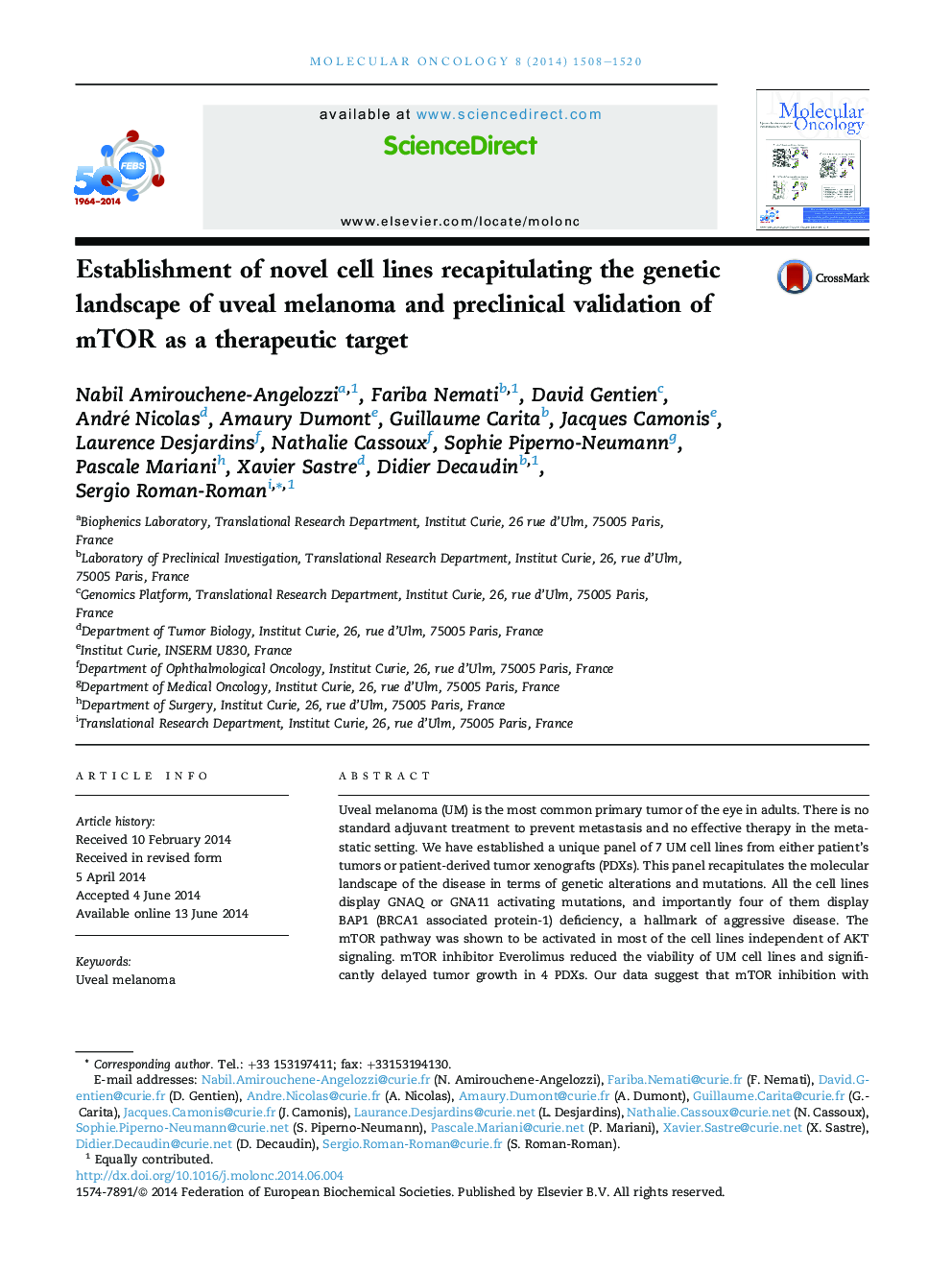| Article ID | Journal | Published Year | Pages | File Type |
|---|---|---|---|---|
| 10914868 | Molecular Oncology | 2014 | 13 Pages |
Abstract
Uveal melanoma (UM) is the most common primary tumor of the eye in adults. There is no standard adjuvant treatment to prevent metastasis and no effective therapy in the metastatic setting. We have established a unique panel of 7 UM cell lines from either patient's tumors or patient-derived tumor xenografts (PDXs). This panel recapitulates the molecular landscape of the disease in terms of genetic alterations and mutations. All the cell lines display GNAQ or GNA11 activating mutations, and importantly four of them display BAP1 (BRCA1 associated protein-1) deficiency, a hallmark of aggressive disease. The mTOR pathway was shown to be activated in most of the cell lines independent of AKT signaling. mTOR inhibitor Everolimus reduced the viability of UM cell lines and significantly delayed tumor growth in 4 PDXs. Our data suggest that mTOR inhibition with Everolimus, possibly in combination with other agents, may be considered as a therapeutic option for the management of uveal melanoma.
Related Topics
Life Sciences
Biochemistry, Genetics and Molecular Biology
Cancer Research
Authors
Nabil Amirouchene-Angelozzi, Fariba Nemati, David Gentien, André Nicolas, Amaury Dumont, Guillaume Carita, Jacques Camonis, Laurence Desjardins, Nathalie Cassoux, Sophie Piperno-Neumann, Pascale Mariani, Xavier Sastre, Didier Decaudin,
